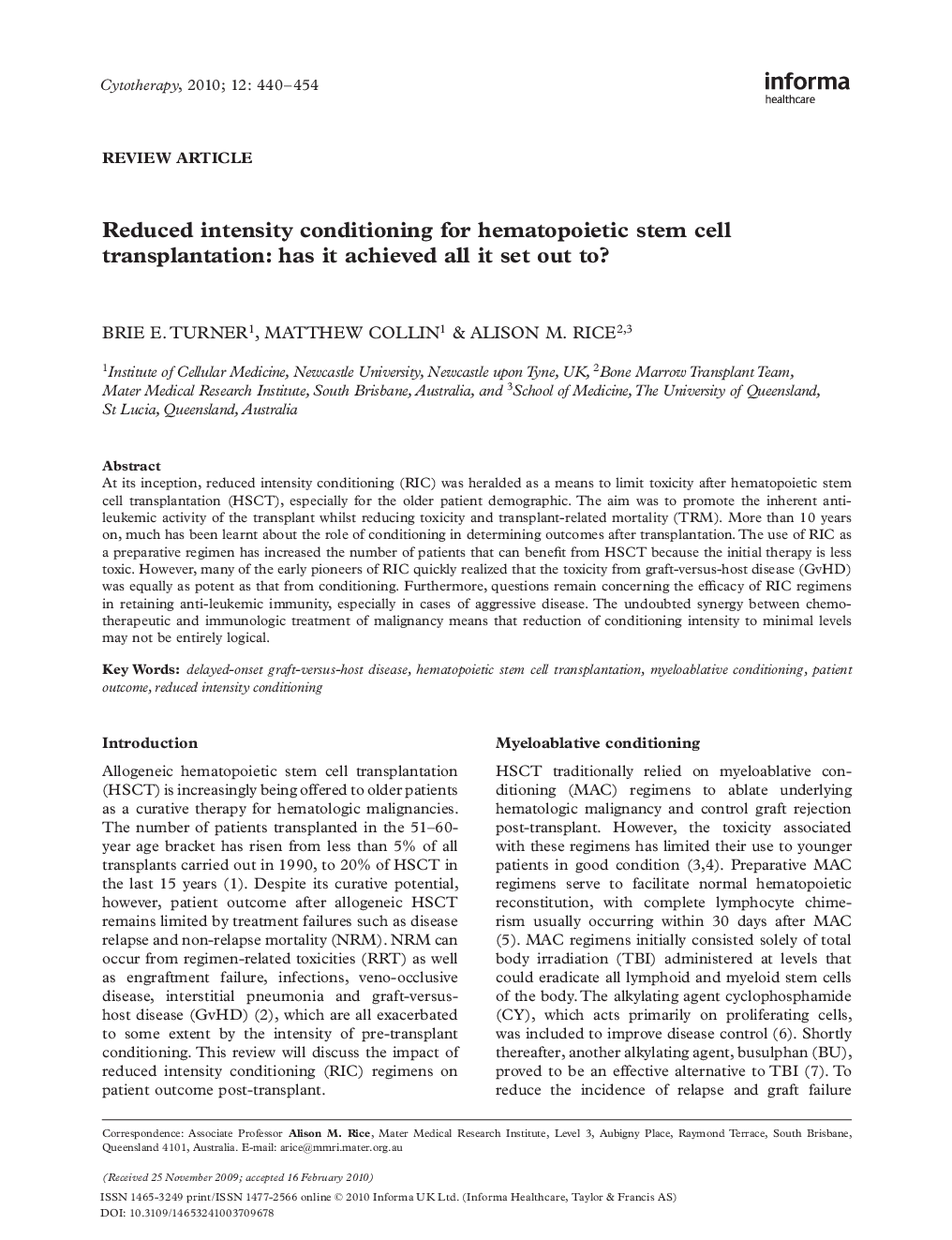| Article ID | Journal | Published Year | Pages | File Type |
|---|---|---|---|---|
| 2172155 | Cytotherapy | 2010 | 15 Pages |
Abstract
At its inception, reduced intensity conditioning (RIC) was heralded as a means to limit toxicity after hematopoietic stem cell transplantation (HSCT), especially for the older patient demographic. The aim was to promote the inherent anti-leukemic activity of the transplant whilst reducing toxicity and transplant-related mortality (TRM). More than 10 years on, much has been learnt about the role of conditioning in determining outcomes after transplantation. The use of RIC as a preparative regimen has increased the number of patients that can benefit from HSCT because the initial therapy is less toxic. However, many of the early pioneers of RIC quickly realized that the toxicity from graft-versus-host disease (GvHD) was equally as potent as that from conditioning. Furthermore, questions remain concerning the efficacy of RIC regimens in retaining anti-leukemic immunity, especially in cases of aggressive disease. The undoubted synergy between chemotherapeutic and immunologic treatment of malignancy means that reduction of conditioning intensity to minimal levels may not be entirely logical.
Keywords
Related Topics
Life Sciences
Biochemistry, Genetics and Molecular Biology
Cell Biology
Authors
Brie E. Turner, Matthew Collin, Alison M. Rice,
